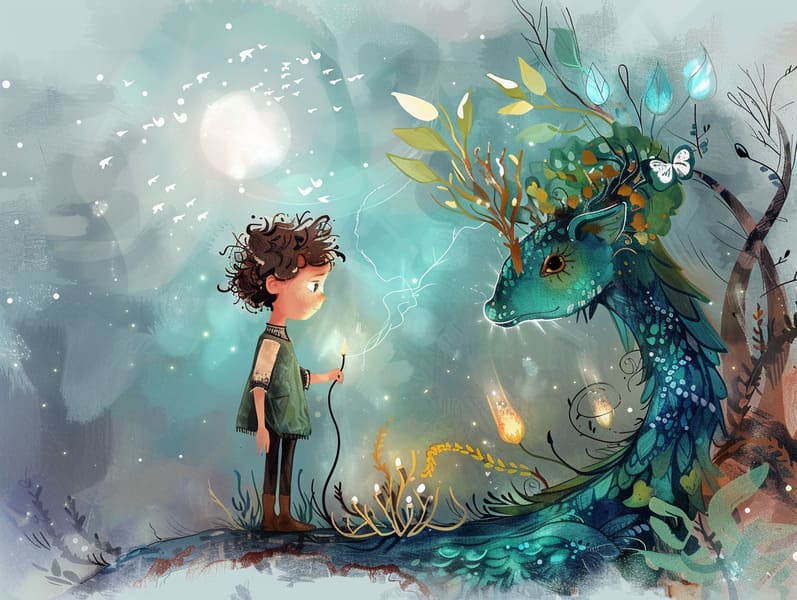The Beginning of Famous Fairy Tales with Their Unceasing Charm.
The Beginning of Famous Fairy Tales with Their Unceasing Charm.
Blog Article

Famous fairy tales have long histories. These narratives have been passed down from one generation to the next far before they were ever recorded. They emerged from a variety of traditions, including Indigenous traditions. They were initially passed along among grown-ups, often carrying themes and messages relevant to the societal norms and beliefs of the time.
Jacob and Wilhelm Grimm, Jacob and Wilhelm Grimm, were among the first to compile many of these beloved stories. Their collection, "Grimm's Fairy Tales," included stories like "Cinderella," "The Bread Crumb Trail," and "Little Snow White," which have since become pillars in the world of iconic fairy tales. Similarly, the Danish author's magical stories, such as "The Mermaid's Tale," and "The Duckling's Story," have captivated hearts worldwide, solidifying their place in the pantheon of timeless fairy tales.
Though they are old, fairy tales remain as important as ever, especially as nighttime stories for kids. These whimsical stories are now available in numerous formats, including colorful picture books, magical animations, and digital fairy tales.
Their enduring popularity can be attributed to several charming aspects:
Vital Lessons: Traditional fairy tales often whisper important moral lessons. Narratives like "The Story of the Boy Who Cried Wolf" teach the value of integrity, while "The Hare and the Tortoise" illustrate the benefits of perseverance and humility. These stories offer kids clear distinctions between truth and falsehood, shaping their moral compass in a gentle yet lasting way.
Empathy and Awareness: Ancient fairy tales frequently involve figures facing difficulties and adversities, motivating readers to empathize with their struggles and applaud their triumphs. For instance, "The Tale of Beauty and the Beast" illustrates the significance of looking past the exterior to see the true being of a soul, promoting tenderness and insight.
Cultural Comprehension: Many classic fairy tales are rooted in the cultural contexts from which they blossomed. Discovering these tales can provide delightful insights into different traditions, nurturing a sense of world understanding and knowledge.
Fantasy and Imagination: The extraordinary elements in traditional fairy tales—magical spells—revitalize children’s imaginations. These fairy tales take readers to mythical realms, provoking fantastical thinking and a sense of enchantment that continues a lifetime.
Old fairy tales are not only captivating but also didactic. They provide alluring tools in promoting various cognitive and emotional skills in the young. When classic fairy tales are told out loud, they strengthen linguistic abilities by teaching new phrases and complex sentence structures. This practice also promotes auditory skills and focus, as little ones follow the story, excited to see what happens next.
Furthermore, examining the themes and characters of ancient fairy tales can strengthen evaluative skills and thinking skills. Children are educated to identify patterns, predict happenings, and understand cause and effect. These explorations also further young ones articulate their thoughts and feelings, contributing to their emotional intelligence.
In today’s digital era, the accessibility of web-based fairy tales has made these narratives more within reach than ever. Internet sites and web find it here apps feature broad selections of old fairy tales that can be enjoyed or listened via anytime, anywhere. Fairy tales spoken are particularly well-received, giving an interactive way for children to relish these charming stories. Read-aloud books and voiced videos bring characters and settings to life, often enhanced by enchanting background sounds and instrumentals that boost the storytelling experience.
The timeless fascination of old fairy tales lies in their ability to adjust to modern days while sustaining their key morals. Contemporary updates of these narratives often show more inclusive protagonists and modern settings, making them relevant to today’s audience. However, the key lessons of heroism, generosity, and justness remain unchanged, continuing to resonate with readers of all ages.
Fairy tales also offer a sense of calm and recognition. They distribute a neat narrative with a transparent beginning, middle, and end, often concluding with the resolution of conflicts and the triumph of truth over falsehood. This assuredness can be reassuring for kids, proffering a sense of security in an variable world.
Classic fairy tales continue to bewitch and guide new generations, maintaining their charm and pertinence in modern society. As kids' bedtime tales, they render accessible a perfect blend of wonder and wisdom, backing moral values, empathy, and creativity. The accessibility of digital fairy tales and the in demand status of fairy tales read out loud certify that these classic stories remain obtainable to new generations.
By guarding and divulging these fairy tales, we continue to pay tribute to the rich tapestry of myths and cultural heritage. Whether you are discovering a vividly illustrated book, seeing a web-based collection, or hearing an audio story, the splendor of Grimm's fairy tales is always within reach. These fairy tales teach us of the unceasing influence of tales and its ability to connect us across eras and regions.
If you are viewing a artistically illustrated book, accessing a web-based collection, or listening on an voice book, the allure of old fairy tales is always within reach.
These tales illustrate of the endless magic of stories and its ability to unify us across centuries and lands, forging a link that captivates and teaches alike.